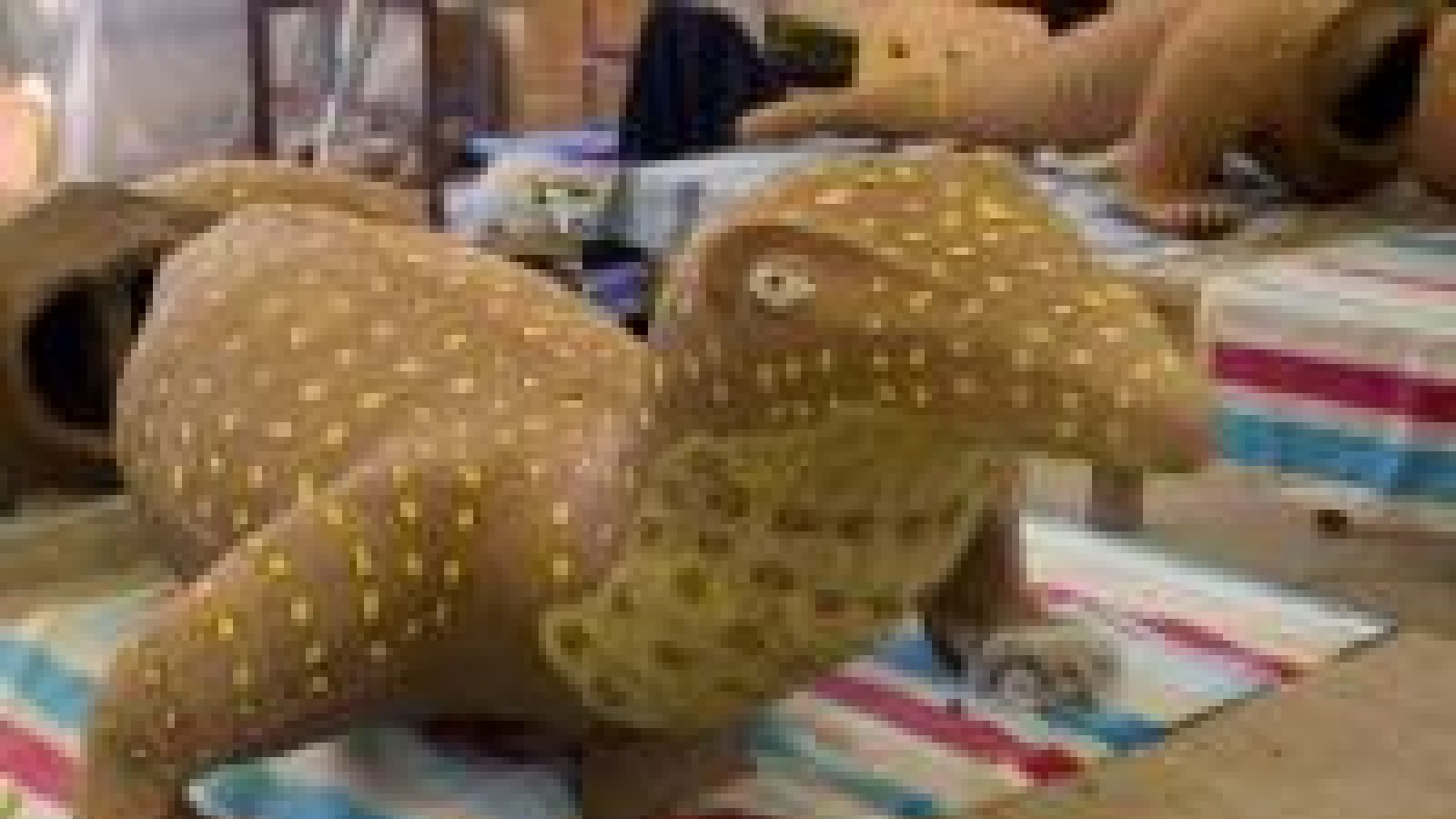Giant lizards take over Ceramics Workshop

If you had set foot in the Ceramics Workshop at the School of Art last week, you would have been greeted by three giant ngintaka lizards.

One of the painted ngintaka
Each ceramic ngintaka, or giant perentie lizard, is more than a metre long. They are a collaborative work between three artists from Ernabella, South Australia with technical support from staff from the Ceramics Workshop.
The works were commissioned by Ananguku Arts for the Ngintaka Songlines Exhibition to be held at the South Australian Museum from 28 March next year. The exhibition is being co-curated by Anangu artists from the Anangu Pitjantjatjara Yankunytjatjara (APY) Lands and researchers from the ARC funded project Songlines of the Western Desert.
The Songlines project coordinator is Dr Diana James from the Research School of the Humanities and the Arts. She is an anthropologist and a bilingual speaker and translator of the Pitjantjatjara language, who has been working with the Aboriginal people of the Pitjantjatjara and Yankunytjatjara lands since 1975.
“These giant ceramic ngintaka bring the majestic presence of this creation story alive,” says Dr James.
“The ceramic artists from Ernabella are descendants of the senior male custodians of the Ngintaka law and knowledge who requested the recording of this story, song and dance to pass on to future generations. The young men are bringing the knowledge of important Aboriginal Songlines to the wider Australian public through their artwork.”
The artists, Ngunytjima Carroll, Derek Thompson and Tjutjuna Paul Andy worked with technical support from Michael Keighery, Janet De Boos and Greg Daly from the ANU for two weeks making the giant lizards. Each one was created as a single piece, and then cut in half to fit into the kiln.
The ngintaka represent the creation ancestor Wati Ngintaka, the Goanna Man. The epic saga of Wati Ngintaka describes how he created landscape features in the APY lands as he was chased by the nyintjiri (small lizard) people, after he stole a special grindstone from their camp. The features that he made along his journey include bush food and water sources in the area.
This is the first time that ceramic ngintaka on this scale have been created – traditionally, they have been carved out of wood.

Painted vessels that tell traditional desert stories
In addition to working on the giant lizards, Ngunytjima created a number of vessels that depict the Goanna Man story. Ngunytjima has previously visited ANU, and teaches pottery to younger men at the Ernabella Arts Centre.
Art production in Ernabella has a long history, starting with the Missions established there in 1948, and moving into ceramics production in 2003.
The three giant ngintaka will be kiln fired before being shipped to South Australia for the exhibition next year.
APY dancers will perform the Wati Ngintaka Songline at the exhibition opening in March next year. They performed the Kungkarangkalpa: Seven Sisters Songline dance earlier this year as part of Canberra’s Centenary celebrations.